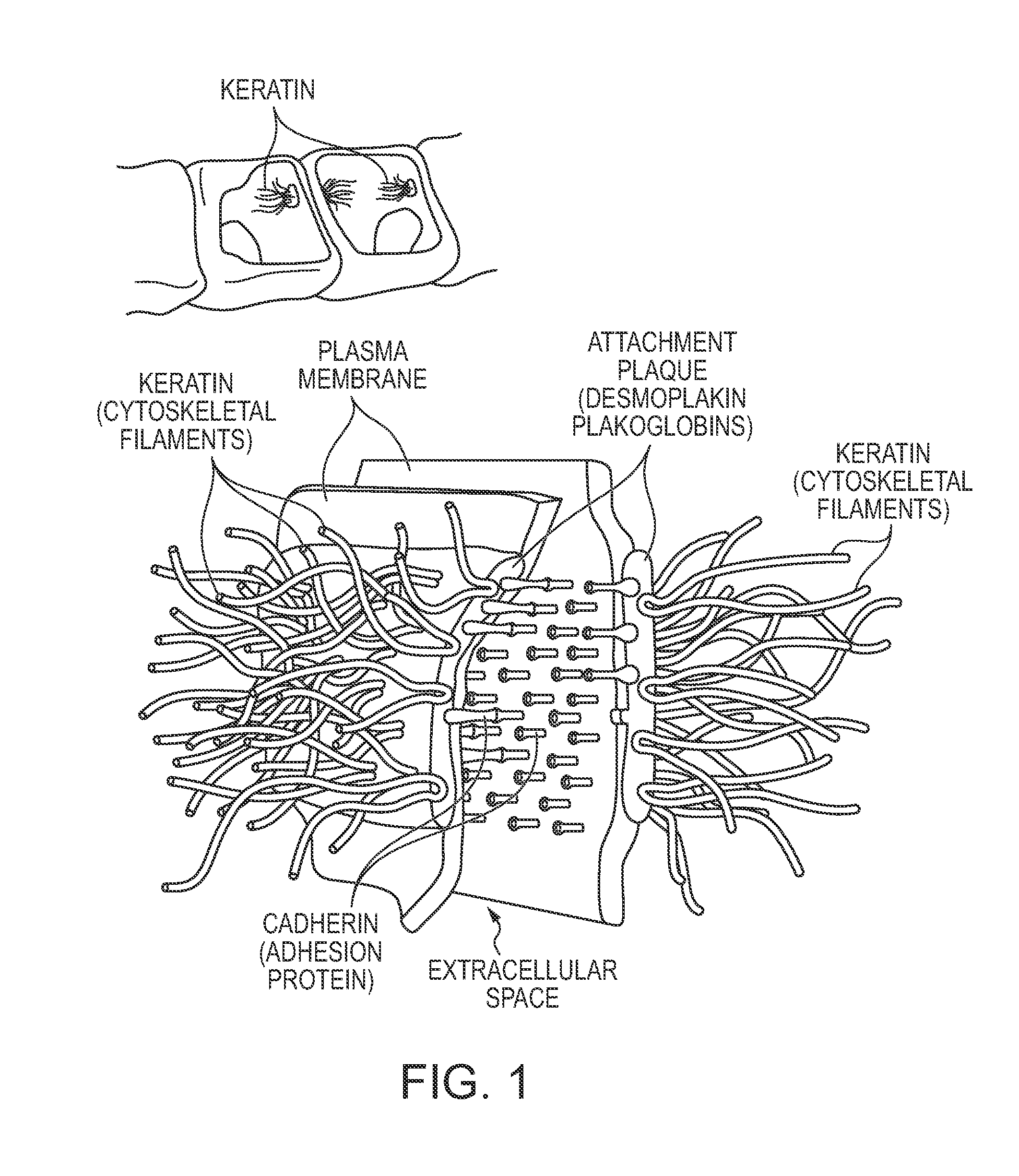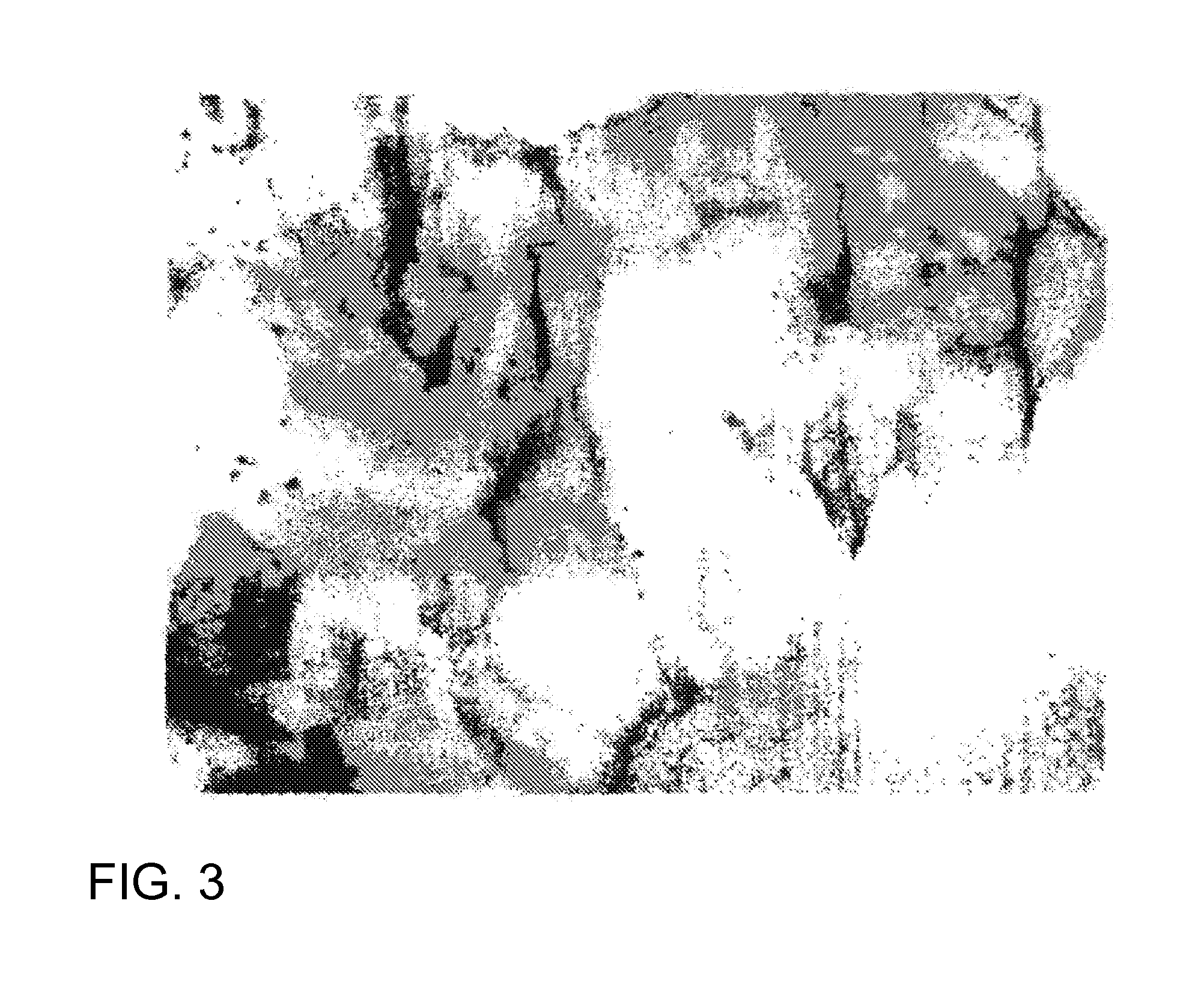Skin tape stripping: a non-invasive diagnostic strategy for dermal exposure to cytotoxic compounds
a cytotoxic compound and skin tape technology, applied in the direction of immunoglobulins, instruments, peptides, etc., can solve the problems of tissue damage, no single mechanism or clear understanding of the biological damage caused, and the destruction of the us stockpile of mustard chemical warfare agents
- Summary
- Abstract
- Description
- Claims
- Application Information
AI Technical Summary
Benefits of technology
Problems solved by technology
Method used
Image
Examples
example 1
Materials and Methods
Human Skin Tape Stripping
[0090]Double-sided optically clear tapes, Y and Z, and medical grade double-sided tape, A, were purchased from Light Fabrications, Inc. (Rochester, N.Y.). Tapes were cut into one-centimeter squares and adhered to 1′×3′ microscope glass slides; The volar surface of forearms of willing investigators were cleaned with sterile alcohol pads and air dried. Backing from slide tapes was removed and the whole slide pressed. Firmly on the forearm for about 10 seconds. Slides were carefully removed at a 45-degree angle to ensure even cell adherence to the tape's adhesive surface. The slides with attached cells were subjected to different experimental staining and handling paradigms identified below. After each experiment, slides were cover-slipped with permount mounting media and. A 24 mm×30 mm cover glass. Slides were dried overnight and photomicrographed using an OLYMPUS VANOX™ (Olympus Imaging America, Inc., Center Valley, Pa.) light microscope ...
example 2
[0095]Although used for there is not a uniform approach for performing sampling of skin stripping new instrumental procedures are available that provide the means of measuring the physical condition of the skin or for quantifying exogenous or endogenous compounds present within the skin.
[0096]The results of adhesive tape stripping samples were compared using three types of analysis: protein assay of keratin mass and two instrumental approaches using light reflection and pixilation of the digitized image (CUDERM™ Bionet, Inc. Spring, Tex. and VISIOSCAN VC 98™, COURAGE™ and KHAZAKA Koln, Germany).
Methods and Materials
[0097]Adhesive tape strip samples were collected using a standardized technique from paired sites on the palm, wrist and dorsal forearm. One sample was analyzed using the VISIOSCAN VC 98™ for skin flakes that provided total area covered and a calculated desquamation index (D.I.) based on the formula by Schatz et al. [32]. These samples were subsequently analyzed for total...
example 3
Approach 1: Immunization with Keratinaocyte Whole Cell Lysate
[0101]Mustard Gas exposed Keratinocytes Protein Preparation:
[0102]Mustard gas exposed cells—after optimal exposure, wash the cells (three times using sterile PBS) to remove the media components by centrifugation. Finally, suspend the cells in sterile PBS.
[0103]—Adjust cell density to 10 million cells / Ml. Freeze the cells and ship on dry ice. Freeze thaw the cell suspension several times to rupture the cells. Both soluble and insoluble proteins keratinocyte whole cell lysate will be used for the immunization. Measure protein concentration by BCA method.
[0104]Two rabbits will be used for the immunization of keratinocytes whole cell lysate.
Rabbit Protein Protocol, 118 Day:
[0105]
TABLE BDay:Procedure:0NZW or Elite NZW Female Rabbit Pre-bleed(Avg. 5 ml serum)10 ID / SC: 250 μg of protein with FCA21Boost SC: 125 μg with FIA31Test Bleed (Avg. 5 ml serum)32-38ELISA Titer Assay of Bleed*42Boost SC: 125 μg with FIA52Test Bleed (Avg. 5 ...
PUM
| Property | Measurement | Unit |
|---|---|---|
| Length | aaaaa | aaaaa |
| Transparency | aaaaa | aaaaa |
| Cytotoxicity | aaaaa | aaaaa |
Abstract
Description
Claims
Application Information
 Login to View More
Login to View More - R&D
- Intellectual Property
- Life Sciences
- Materials
- Tech Scout
- Unparalleled Data Quality
- Higher Quality Content
- 60% Fewer Hallucinations
Browse by: Latest US Patents, China's latest patents, Technical Efficacy Thesaurus, Application Domain, Technology Topic, Popular Technical Reports.
© 2025 PatSnap. All rights reserved.Legal|Privacy policy|Modern Slavery Act Transparency Statement|Sitemap|About US| Contact US: help@patsnap.com



